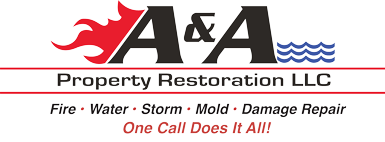6 IMPORTANT TIPS TO AVOID WATER DAMAGE IN YOUR HOME
Water leaks can cause enormous damage around your property if they are not dealt with quickly. Here are several tips on keeping water from ruining parts of your house or business – and creating expenses that you can prevent with proper management.
1. Watch for Small Puddles
We don’t mean to coin a phrase, but small puddles can mean big problems. If you see a puddle around your fridge, sink, washing machine, dishwasher, or HVAC system, it spells trouble. Often these types of leaks are caused by hidden hoses or tubing that has developed cracks. You can’t tell where else the water may be leaking, so the potential for rot and mildew problems can be high. Isolate the problem to the right appliance, shut down water to it if possible, and phone a water damage expert for an inspection if you can.
2. Maintain Your Hoses
Speaking of those hoses hiding away in your everyday appliances – when was the last time you checked them? You don’t have to pull out your heavy appliances or pry off control panels all the time, but checking your hoses and connection once every year or so is a useful way to spot when something needs to be replaced…before it starts leaking.
3. Use Leak Sensors
Leak sensors attach to appliances and let you know if there is a serious problem with water damage. These sensors are most useful in situations where rising water is a problem, such as basements in certain climates, certain kinds of pumps, and other kinds of plumbing or HVAC systems. If water goes beyond a certain point, these sensors notice it: They can send out alarms or even shut down appliances if necessary. If you’ve had problems with flooding in the past, consider one of these devices.
4. Take Care of Your Caulking
Caulk and sealants are your first layer of protection against common household leaks from almost every source, from rooftop materials to your bathtub. While you may not think much about caulking, if it starts to crack or rip away over time, then leaks could result – the kind of leaks that don’t go away, but continue to seep into deeper cracks until they are causing serious damage. Inspect and replace damaged caulking to prevent this: It’s an easy and worthwhile DIY project.
5. Check Your Ventilation
What do you know about your attic ventilation? A good attic has enough ventilation too move hot, moist air from the house to the outdoors. Poor ventilation means that condensation will form in your attic, especially in winter, and start damaging wood and other materials that may be present.
6. Protect Your Pipes
If your pipes are in danger of freezing – if you live in a particularly cold climate – make sure they are protected. Electrical tape and other forms of insulation at the right points can be very effective. The old trick of turning your taps on slightly overnight can also help if temperature go sub-zero.
A & A Property Restoration LLC
LET US HELP
Proudly Serving the Twin Cities Metro Area
Search Posts
Recent Posts
- WHERE TO FIND HIDDEN DAMAGE AFTER A FIRE July 24, 2017
- SUMMER STORMS AND EMERGENCIES July 10, 2017
- HOW TO PROTECT YOUR HOME IF YOU LIVE IN A FLOOD ZONE June 26, 2017
- HOW LONG IS TOO LONG? DEALING WITH WATER DAMAGE June 12, 2017
- FIRE DAMAGE: WHAT TO EXPECT IN THE FIRST 48 HOURS May 22, 2017
Categories
Subscribe!
Thanks for subscribing! Please check your email for further instructions.
